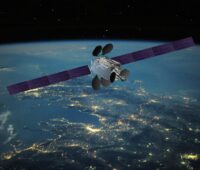
SpaceX is one of the world’s current leaders in terms of providing unique, never-before-seen solutions to launching satellites into orbit, Tesla Roadsters to outer space, and reusing rocket boosters by having them automatically return to Earth after being used to launch these things – in addition to payloads requred by the International Space Station – away from planet Earth’s field of gravitational influence.
Falcon 9 is a rocket designed and manufactured entirely by Elon Musk’s very own SpaceX that is formally classified as a two-stage-to-orbit medium lift launch vehicle.
The first part of this classification – two-stage-to-orbit – refers to the need of Falcon 9 to use two distinct, separate “layers” or stages of rocket boosters in order to successfully make the payloads attached to Falcon 9 into space. “Launch vehicle,” on the other hand, refers to vehicles used to push one or more payloads from the surface of planet Earth to space – “space” refers to both wihin Earth’s orbit or past the orbit and legitimately into outer space.
“Medium lift” refers to launch vehicles, as defined above, that can lift anywhere between 4,400 to 44,100 pounds of payload to low Earth orbit, at minimum. This is as opposed to their small-lift counterparts, which can push a maximum of 4,400 pounds’ worth of payload into low Earth orbit. Finally, heavy-lift varieties of launch vehicles can sent anywhere from 44,000 to a whopping 110,000 pounds of payload to low Earth orbit. It’s worth noting that while the likes of SpaceX’s Falcon 9 rocket has been designed to carry payloads that would make Falcon 9 officially classified as a “heavy-lift launch vehicle,” such a launch has not yet taken place, though Elon Musk and team plan on doing so soon enough.
SpaceX incurred a rare rocket failure recently
Since mid-2010, Falcon 9 rockets have contributed to 76 mission successes, one full-out failure, and one partial failure. This was true up until just two days ago, on Wednesday, Nov. 20, 2019, when the prototype of the rocket that SpaceX plans on sending to Mars one day broke apart when being tested on the ground.
SpaceX engineers at a Texas-based facility were trying to test Starship Mark-1’s ability to withstand high pressures when a metal cap was forcefully sent out from the test vehicle.
There are a handful of different angles of the test failure across the Internet which were captured by fans who were present at the test earlier this week.













Leave a Reply
Be the First to Comment!
You must be logged in to post a comment.
You must be logged in to post a comment.